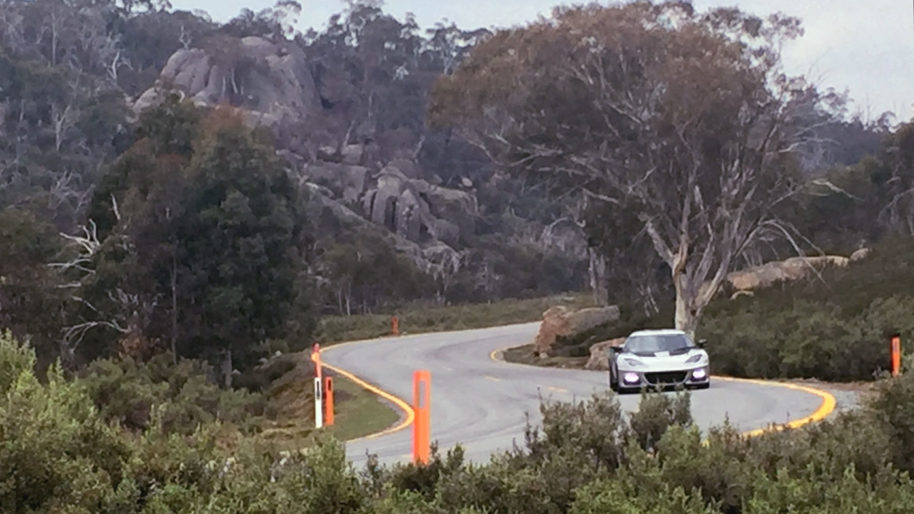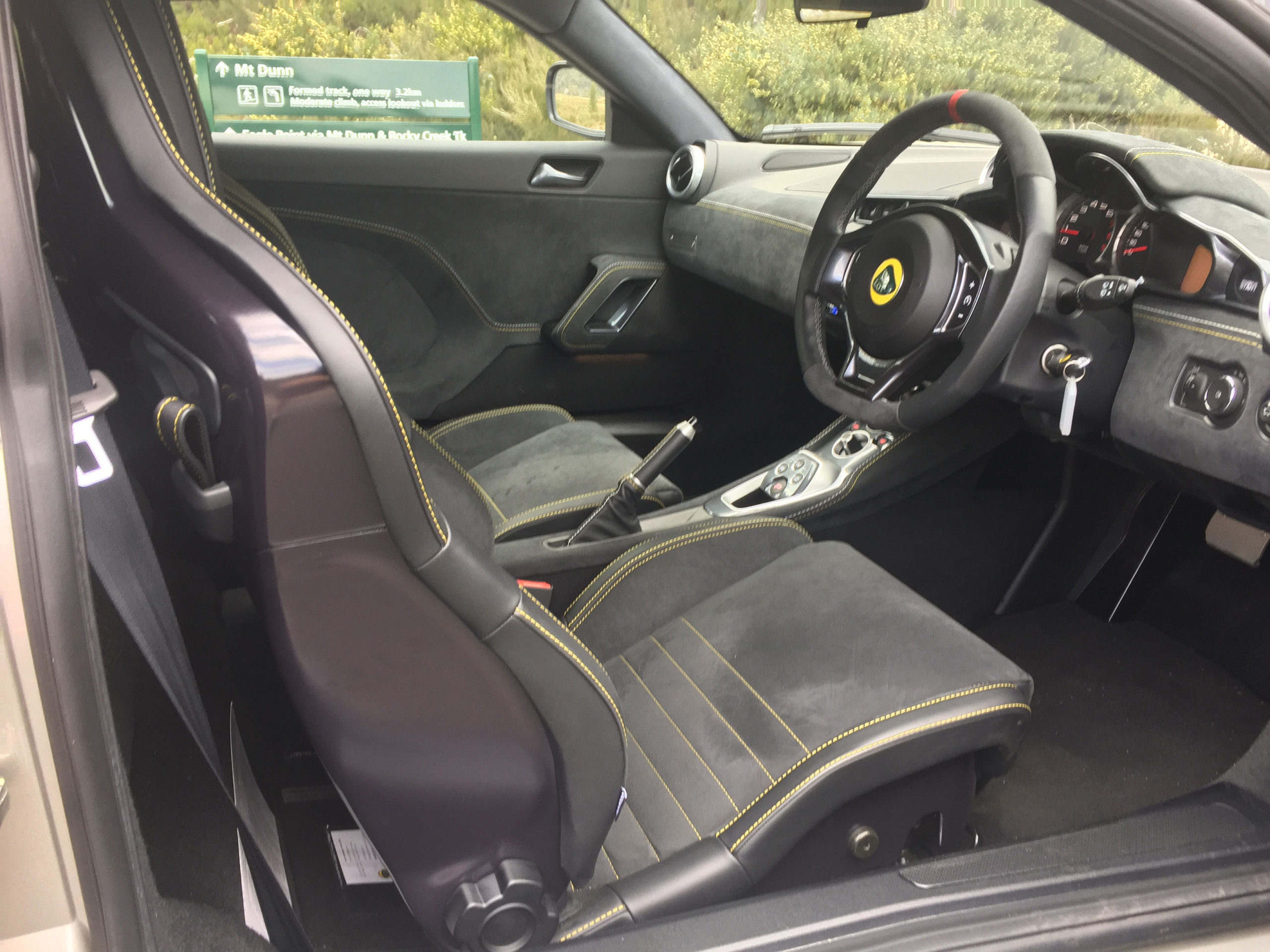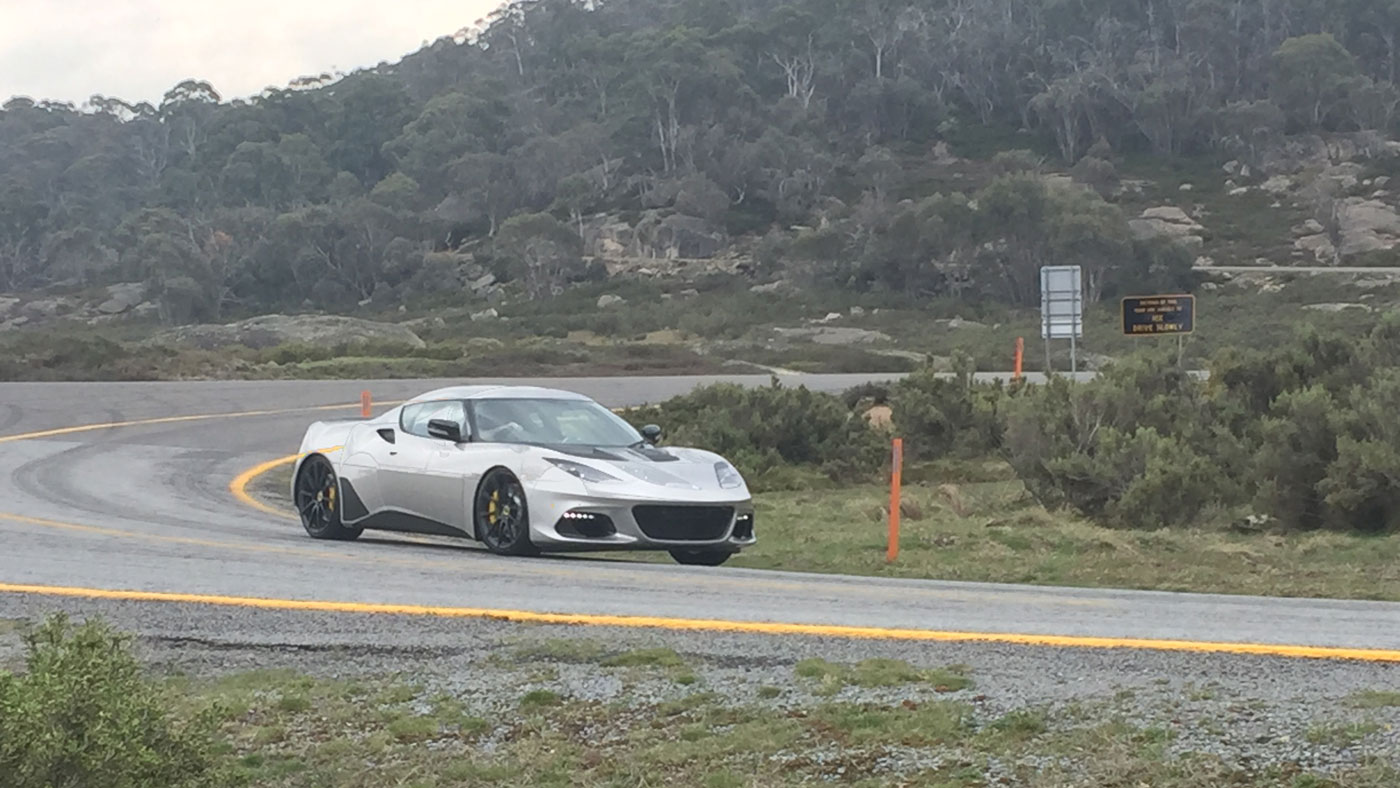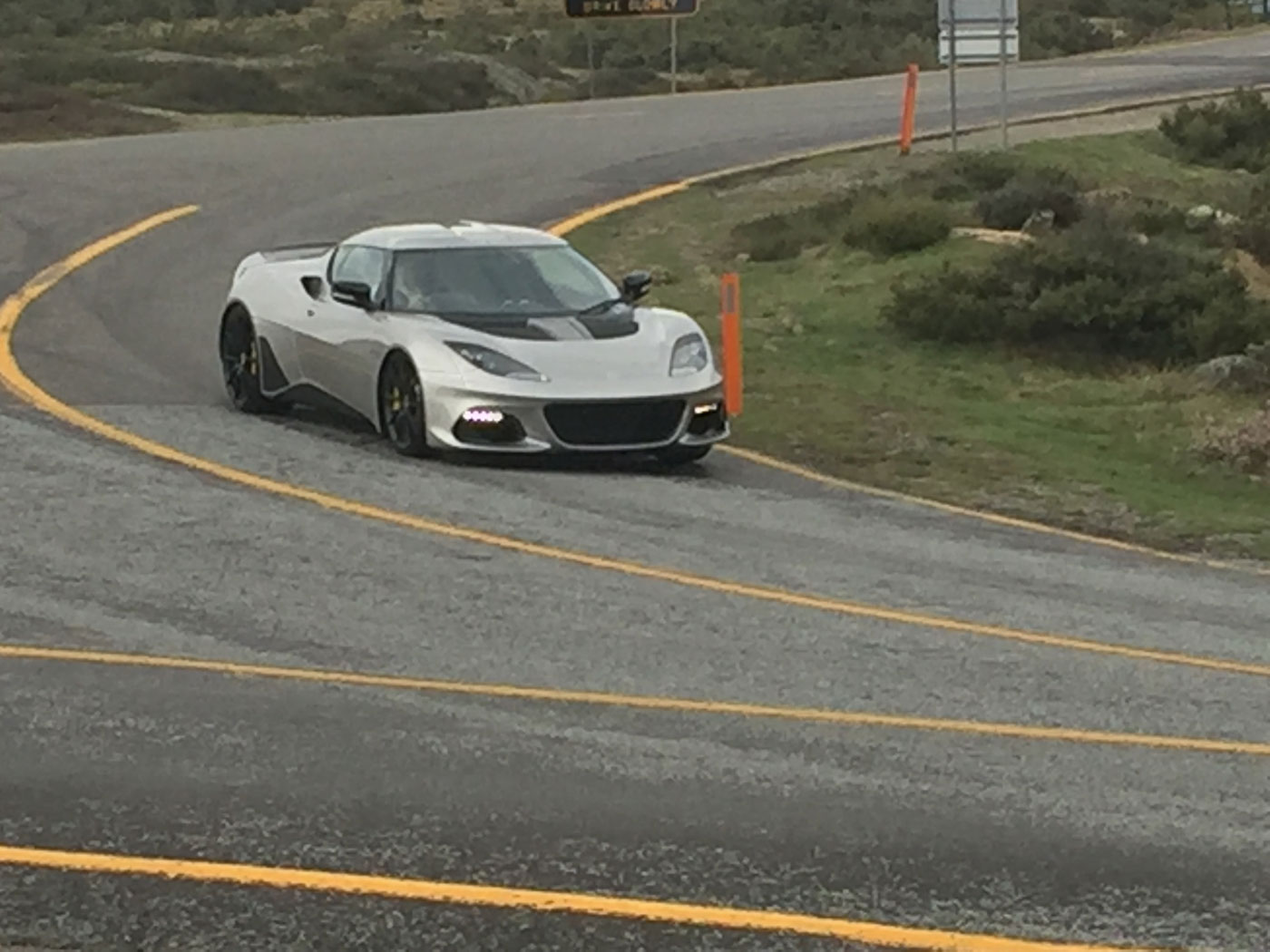Story and images thanks to Adam Davis
In this story, Adam Davis takes us for a drive from Zagame Lotus Melbourne through the Victorian countryside in the Lotus Evora GT410 Sport IPS.
It’s not often you can be left buzzing after 800-plus kilometres of seat time, but as I reflect on my epic drive to Mount Buffalo in the Evora GT410 Sport IPS, the tingle remains.
My brief was relatively simple: pick up a shiny new Evora 410 from Zagame Lotus Melbourne and hook up with the team from MOTOR magazine for a feature drive and photo shoot.
Having experienced an Elan Sprint’s sublime synergy, the wedgey cool of an Esprit Turbo and a supercharged four-pot Exige’s manic squeal, I’m fortunately familiar with the Lotus ethos. However, this would be my first-ever Evora experience… something that I’d been looking forward to since reading Evo’s 2009 Car of the Year extravaganza, where the Evora managed to beat Porsche’s incredible 997.2 GT3.
A decade on, the Evora has evolved. From the original’s 206kW, the GT410 Sport has gained a full 100kW, as well as a 70Nm swell of torque, now 420Nm. But it’s the chassis that has always tantalised.
For MOTOR, it was their first experience of the Evora’s Intelligent Precision Shift automatic gearbox, and that would prove a key focal point of the day: thus equipped, how did the GT410 Sport measure up as a liveable grand tourer in 2019?
A straw poll indicated that many car enthusiast friends weren’t on-board with the automatic Lotus concept; that a Lotus should remain true to three-pedal operation. But in the 21st century, a self-shifter simply must be an option – think peak hour traffic and the higher count of drivers who are cut out of the Lotus experience simply because they don’t drive manuals. Besides, the six-speed manual is still standard equipment on the Evora GT410.
Back to the moment. I’m handed the key to a metallic silver Evora GT410 IPS by Zagame Lotus Melbourne’s Bruce Astbury, who walks me through this example’s specification.
As well as the six-speed, torque converter-equipped automatic gearbox, this 2+0 car is highly habitable with the 7.0-inch touchscreen infotainment system (featuring DAB and Apple CarPlay), air-conditioning, cruise control, Sparco seats, upgraded stereo with sub-woofer, as well as a lovely leather/Alcantara combination trim steering wheel.
Sliding in to the Sparco, access is a simpler process than in an Exige, a thinner sill section and higher-set seat base aiding entry. Being around 185cm tall, headroom is good however the fixed headrest is set too low for my neck.
The traditional key is inserted and twisted, and I press the ENGINE START button. A churn of starter, then nothing. Bruce to the rescue: ‘The button needs to be held until the engine catches.’ That understood, I hit the button again… and the workshop erupts with the sound of supercharged V6.
The auto retains the manual’s full engine specification and includes the Active Exhaust Valve control, which allows that start-up flare before settling to a (relatively) benign idle.
Shifting into gear is a simple process, thanks to the centre console-mounted button array that enables Park, Reverse, Neutral or Drive options.
Engaging reverse also switches on the rear view camera, which is of considerable benefit; the carbon fibre engine cover looks gorgeous but does limit natural rearward vision.
I ease the Evora out into early-afternoon Richmond traffic, and the ‘traditional’ autos advantages over a dual-clutch system are obvious. There is no driveline snatch, nor pause as the drive is taken up. As such, it’s easy to make smooth progress.
I’m also thankful for the air conditioning, cruise control and satellite navigation system fitted to this example, adding further layers of usability.
We all know, however, that a true Lotus needs to be tactile and responsive, to provide detailed feedback without crashing over bumps and to steer telepathically. These virtues are felt in the Evora GT410, even in stop-start traffic. In the default Drive mode, with the exhaust valve closed to around 4500rpm, serene progress can be made.
By the time we hit the highway, it’s easy to envisage using this Evora IPS every day.
At highway speeds more road noise filters into the cabin, thanks largely to the standard-fit Michelin Pilot Sport Cup 2 tyres, which are track-oriented but still road legal. They are also quite soft, to generate the additional grip, but if your Evora is used more on-road you can specify a Touring suspension package, which includes the road-biased Michelin Pilot Sport 4S tyre. The Touring pack also swaps out the standard Eibach spring / Bilstein sport damper combination in favour of a more compliant Bilstein option.
Sixth gear cruises at a canter, with under 2000rpm showing on the tachometer. Here, the Evora’s ride impresses, taking-in compressions and expansion joints with ease. Of course, overtaking is also a pleasure, the supercharged engine’s torque and response making light of the Evora IPS’s 1331kg unladen weight (11kg up on the six-speed manual), the auto intuitively plucking the right gear.
Despite the Evora delivering above expectations on the highway, eyeing the turn-off for Mount Buffalo provides a flutter of anticipation: it’s the middle of a week day and traffic is light, so it’s time to hit the Sport button and start revealing the Evora’s wilder side.
Instantly, the Sport mode alters the exhaust, bringing in more bass even at idle. Throttle and gear shift response are also sharpened, inviting manual shifting via the steering wheel-mounted pedals.
Speaking of throttle, if you’re looking at the interior rear-view mirror, you can see the tangible result of your pedal inputs, as the engine’s throttle linkage can be seen opening and closing in response. It’s another emotional touchpoint between car and driver.
The Edelbrock-supercharger-whine-overlaying-V6-scream is amplified off Buffalo’s rock shelves as we ascend towards the peak, the Evora GT410 Sport able to tackle the myriad bumps and cambers with precision and no fear of grounding the front spoiler.
Use the alive steering’s 2.86 turns lock-to-lock to key into the apex, and the Evora responds rapidly but fluidly, the Cup 2 Michelins warming to the task.
These gumballs measure 235/35/R19 up front and 285/30/20 on the rear, wrapping some lovely forged aluminium wheels, and dry grip is simply phenomenal. Squeezing back onto the power at corner exit, traction is also impressive, able to push the Evora into the road with little wasted effort as a snap signifies the next gear.
After a pause for breath at the summit, the descent reveals further attributes, such as the AP Racing braking system’s progressive pedal build-up with its four-piston calipers clamping 370mm front and 350mm rear two-piece discs.
Even with gravity pushing you on, the Evora’s ability to brake evenly – even over bumps – before turning-in with precise response to your inputs is unfailing.
By the end of the run I feel a new level of connection to the Evora. Sure, the base concept is a decade on, but with that time has come a big shift in power and specification. The fact that you could comfortably use one every day, as well as on the track or a run up Mount Buffalo, makes the case more compelling than ever… automatic and all.




